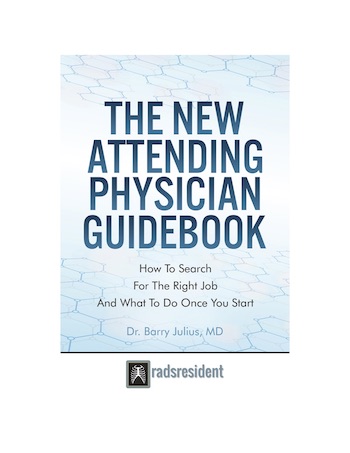
A groundswell of controversy about maintenance of certification (MOC) has been building slowly for the past decade. In truth, no quality evidence-based study has shown a link between quality of care and MOC. Therefore, multiple entities in the United States are abuzz, attempting to create anti-MOC legislation to prevent boards from gaining a legal foothold in states requiring MOC for practicing medicine. Some of you may hear about these issues in the press. (1,2) These issues are not just unique to radiology.
But before we discuss the individual controversies, we need to delve into MOC a bit further, especially for those just starting. What exactly is the maintenance of certification once you complete your residency in the United States? What do you have to do to satisfy the requirements? Why do you need to meet the requirements for MOC? And when do the requirements for maintenance of certification begin? Some of the answers to these questions are not so obvious. So, these are some of the questions I hope to answer in this post.
What is MOC?
According to the “experts,” maintenance of certification is a way to show that you are continuing to keep up with the educational demands of your specialty. Theoretically, it should ensure continued minimal competency to practice medicine. The American Board of Radiology and your state of practice require specific essential documentation for diagnostic radiology. For instance, the ABR requires 25 hours of continuing education credits (CME) per year, passing a test every ten years or completing online email questions correctly to certify competency, verification of state licensure, and quality improvement projects or leadership roles.
Individual states also require their primary means of determining competency to maintain licensure. When I first obtained my license in New Jersey, I had to take a required orientation course. Every year, I need to submit 50 CME credits each year. In addition, the state requires me to satisfy an end-of-life care course requirement every three years. Each state can significantly differ in what is needed to keep a license. Go to the site called mycme.com for more information on your particular state.
How Do I Get CME Credits?
Typically, radiologists can get continuing medical education credits in one of many ways. First, many online radiology society websites, such as RSNA and ARRS, develop education portals for radiologists to complete either articles or lectures. The radiologist then takes a short quiz they must pass at the end of the episode to document that he has completed the task.
Second, you can attend conferences at many locations throughout the country and then collect the CME credits at the end of the course. Usually, the conference presents the physician with a certificate of completed CME at the end of the meeting.
And then, internally within your hospital or practice, you can participate in tumor boards, conferences, etc. Subsequently, you can obtain the CME credits after documenting what you have experienced as long as the creators of the conference have applied for CME.
What Happens If I Don’t Participate In MOC?
Unfortunately, for most radiologists, it is not an option to forgo MOC. Most hospitals require certification by the ABR and state licensure bodies to maintain staff privileges. And individual practices often stipulate that you need MOC to remain in practice.
But, you may hear about other specialty physicians in the news who have not renewed their certification. Many of these folks are leading political and internal movements to eliminate the MOC requirements. Individuals and organizations are suing certification boards who are teaming up with insurance companies and hospitals. Some of these boards aim to make MOC a requirement for radiologists to get reimbursed for the interpretation of images. Usually, the physicians not participating in MOC have been practicing for a while, so they have the clout to abandon the MOC process.
When Do I Need To Start With The MOC Process?
Over time, the ABR requirements about when to start MOC have changed. The MOC process begins on day one since the ABR now considers MOC to be continuous. According to the ABR, you need 75 CME credits over three years of practice to maintain certification. That means you could theoretically begin CME on the first day of practice or wait a bit to start.
On the other hand, each state has different requirements for when to begin MOC. You should look up your state online to determine which rules are correct. Again, refer to the site called mycme.com, which outlines the specific requirements for each state. For the state of New Jersey (my state of practice), they give you a grace period of two years to begin CME after the first renewal of your state licensure.
Former Actions Against MOC
According to a Medscape article from 2017 (1), many state organizations have been banding together to prevent the overreach of MOC. This article documents many of the individual state medical society activities. I thought these activities were particularly fascinating.
To summarize some of the activities in this article, multiple state medical societies have attempted to pass anti-MOC bills in their states. Most of these attempts are in process or have been temporarily tabled. One state, Georgia, became the only state to pass a bill that prevents using MOC as a condition of licensure, employment, reimbursement, or malpractice insurance at certain hospitals.
At the time of the writing of the Medscape article, several states have initially failed in their attempts to pass MOC legislation. Three state medical societies (Arizona, Kentucky, and Michigan) created stipulations stating state medical boards “may not require a specialty certification or maintenance of a specialty certification as a condition of licensure.” However, legislatures did not pass the bills. Oklahoma became the first state to attempt to enact legislation to remove MOC as a requirement for physicians to obtain a license, get hired and paid, or secure hospital admitting privileges. However, at the last minute, the bill failed after significant lobbying by ABMS (American Board of Medical Specialties).
Other state medical associations are in the throes of creating anti-MOC bills. Both Tennessee and the Florida Medical Associations aimed to create bills to defeat efforts by the ABMS and FSMB to impose MOC as conditions for reimbursements and licensure. Finally, numerous other states, including Maryland, Missouri, North Carolina, Texas, Alaska, California, Maine, Massachusetts, New York, and Rhode Island, are trying to enact anti-MOC bills.
More Recent Defeat Against The Anti-MOC Movement
Most recently, in 2021, the federal court of appeals affirmed the dismissal of physicians’ claims against the American Board of Internal Medicine claims that challenged the MOC process. However, other litigation is still ongoing.
Summary
Regardless of your stance on MOC, it is integral to most radiologists’ practice. It will be present in some form or another for a long time, perhaps in a more weakened state. Follow the current rules when starting, and you will get to practice radiology. Be a revolutionary against the system, and you may have difficulties. Either way, the final decision is up to you!!!
(1) Chesanow, N (6/21/2017) The War Over MOC Heats Up. Retrieved from http://www.medscape.com/viewarticle/881274
(2) Reese, N. (8/3/2016) MOC Exam: Take It Or Not? Retrieved from http://www.medscape.com/viewarticle/864922






